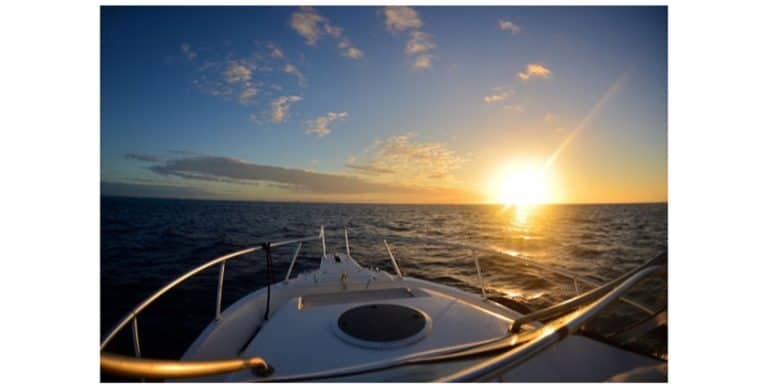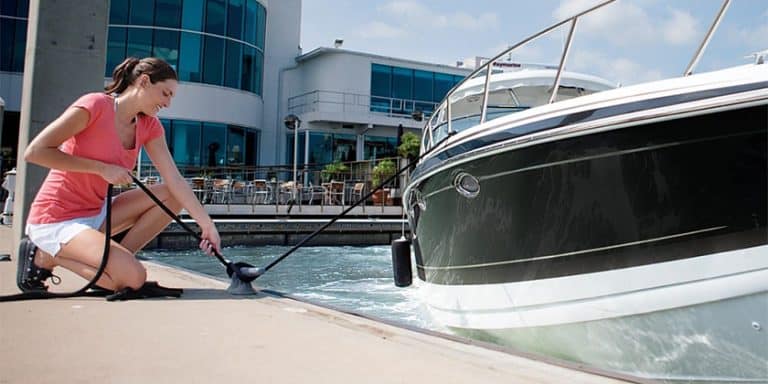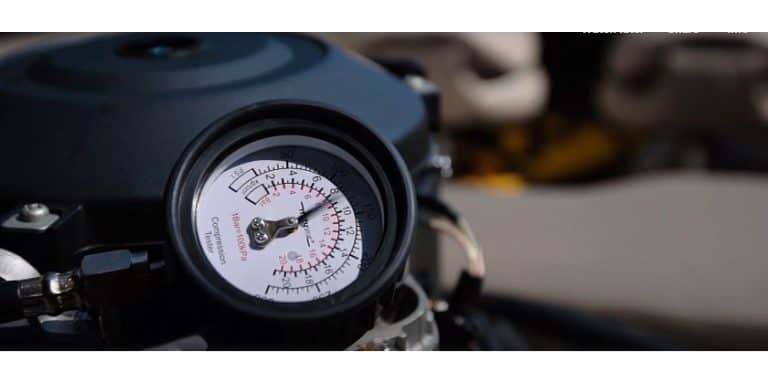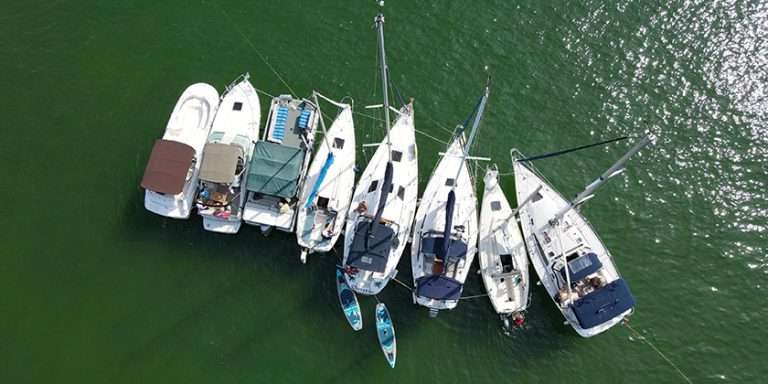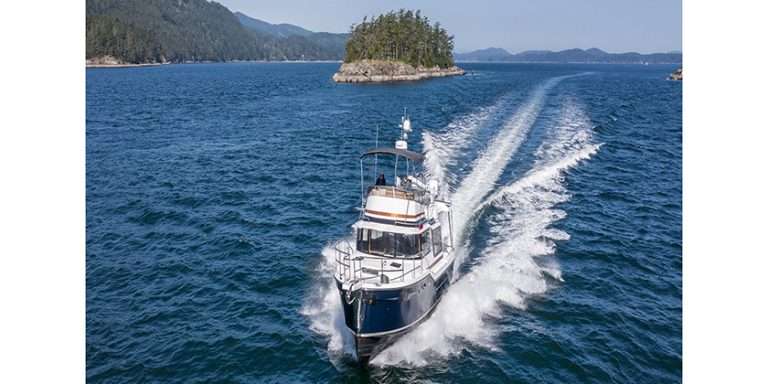Confident Sailor / Reluctant Sailor – Part 2: Getting Ready – Skipper and Crew

By Rob MacLeod
In this second of three parts, we will explore preparing for a longer cruise from the people side. Later, in the third instalment we will look at final preparation of the boat.
Since the first instalment of Confident Sailor / Reluctant Sailor appeared in the June issue, Mary and I have had to postpone our Bahamas departure for one year. At issue is emergency medical insurance. There are many people who choose to go cruising without insurance. Some put aside a sizeable emergency fund ($10 – 15,000) in a readily accessible account and some – like Mary and I – choose emergency medical insurance.
In preparation for departing this year, Mary researched insurance coverage for extended cruising. Our plan was to leave in August, with a return home in both September and October for prior commitments. That meant we could travel on an annual policy with trips of up to 30 days until the end of October and then contract for coverage for November 2016 through to May 2017. Most emergency policies require provincial medical coverage in place. We found online quotes were high and varied widely. After going to several individual sources, including the auto club and our bank, we went to a travel insurance professional who had access to many other options. A good broker will help find the best policy for you and guide you through the fine print.
The trick for those of us who are old enough to collect CPP, is we are also subject to the ‘6-month stable’ constraint. Most policies have a stability clause it is paramount that you read and understand it. For example:
Any conditions or Changes in Your Health (except Minor Ailments) that have not been Stable and Controlled for a period of three (3) months before the Departure Date for an Insured Person aged 3 months to 55 years and for a period of six (6) months before Departure Date for an Insured Person aged 56 and over, unless specified otherwise in writing by the Insurer.
Part of Mary’s self-classification as a ‘reluctant sailor’ is her aversion to risk – and travelling without adequate insurance is a risk. As in our original trip in 2009 we were willing to accept some risk – including an additional $10 – 15,000 in unexpected expenses – but not the risk of a major medical emergency requiring US hospitalization and / or transport back to Canada. It was a change in medication that made us medically un-stable until December – leading us to postponement our departure.
That said, the preparation continues.
Confidence Does Not Equal Competence
In the 90s, I worked for a marketing firm as VP of Training and Development. One of the divisions conducted extensive research on the ability of people to apply training to their job. The research looked at two factors of performance – confidence and competence. Competence is defined as the knowledge, skills and experience to do a particular task. Confidence is defined by having the ‘trust’ in yourself to perform that task.
 They found approximately 20% of people being trained (across a large array of skills) had the competence (ability) and the confidence (trust in self) to do the job. They found that roughly 60% of trainees had the competence, but not the confidence to act. The final 20% of people had the confidence to do something but lacked the ability.
They found approximately 20% of people being trained (across a large array of skills) had the competence (ability) and the confidence (trust in self) to do the job. They found that roughly 60% of trainees had the competence, but not the confidence to act. The final 20% of people had the confidence to do something but lacked the ability.
As a certified SailCanada Intermediate Instructor, I have trained many people to sail and handle a sailboat under power and sail. At the Basic level, after 18 hours of on-the-water training we send our students out on their own from the dock that they know and in waters they are familiar with. I watch from shore as they struggle through things they know and have experience with until their confidence catches up with their competence – and then they go sailing.
SailCanada (Sailing.ca) recommends 10 daysails for practice and experience before taking the next level – Intermediate (Bareboat Skipper) level. What does this have to do with this article? When you learn something, you are in the middle 60%. Only time and practice will get you the competent/confident stage.
At the intermediate level, we spend at least five days living aboard a 35 to 40 foot sailboat – about the size you would charter. We teach all of the skills necessary to handle this sized sailboat, anchoring for two or three nights, docking for one or two and handling on a mooring if we can find one. Each student prepares a meal, getting used to smaller galleys and propane grills. Everyone takes their turn completing engine checks, maintaining and otherwise treating the boat as if they chartered it. By the end of the week, all of the requisite knowledge and skills have been covered. Would I say my students are competent? No – not until they actually take a boat out on their own and go through the same week. Intermediate Standard:
To be able to cruise safely in familiar waters as both skipper and crew of a sailing yacht of 9 to 12 meters, sloop rigged with an inboard engine, in moderate wind and sea conditions by day. The standard emphasizes on-the-water skills at a level acceptable for bare boat chartering for extended cruises in coastal waters.
Although it is not necessary to take a “cruise and learn” vacation to gain the necessary skills, I do highly recommend learning everything that is contained in the Intermediate Standard before chartering. Then to take your boat further afield – say to the Bahamas and back, you need the knowledge and skills covered in the SailCanada Coastal Navigation and Advanced Cruising Standards:
-To be able to act safely as skipper and crew of a sailing cruiser of 10 – 15 meters, any modern rig and inboard engine, operating within 100 miles of shore by day and night in coastal or inland water in any weather.
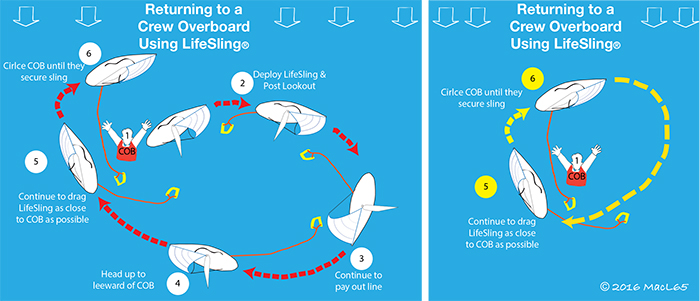
So what else should you know and be competent in to take on a major journey? The SailCanada Basic, Intermediate and Advanced standards cover:
Crew Overboard – Remember, it may be the confident member of the team that goes over and the more reluctant partner has to be able to execute the COB manoeuver to ensure a safe recovery – and that includes getting the person back onboard
Anchoring – knowing the correct ratios for differing conditions – selecting the most appropriate anchor, setting the ‘hook’ and recovering the anchor, finding a suitable anchorage (see Staying Put in CY April 2015 for a detailed article on Anchors and Anchoring)
Living Aboard – galley procedures, cooking systems, proper electrical management (both 12 and 110 volt), effective use of refrigeration, fresh water and waste water management
Handling the Boat Under Power – docking and undocking, including in a current or tidal waters
Handling the Boat Under Sail – reefing, heaving to, use of the traveller, using a cruising spinnaker
Navigation – Getting marine forecasts (yes plural), charts reading, chart plotters, VHF Radio with digital selective calling (DSC) and piloting in unfamiliar harbours
Safety and systems – filing a sailing plan, checking all of your boat’s systems – galley, water, waste, electrical, sails, rigging, first aid and safety
Add to all of this, understanding and the COLREGS (International Rules for the Prevention of Collision at Sea – 1972)
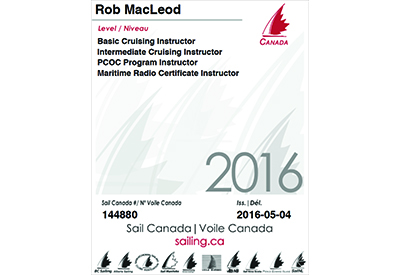 Being a competent confident skipper requires gaining the knowledge and experience to be able to handle your boat in varying situations – situations you may never face in your homeport. If you are considering cruising – either for a few weeks, a few months or for several years, take the time to acquire the knowledge and then practice your skills to build your confidence.
Being a competent confident skipper requires gaining the knowledge and experience to be able to handle your boat in varying situations – situations you may never face in your homeport. If you are considering cruising – either for a few weeks, a few months or for several years, take the time to acquire the knowledge and then practice your skills to build your confidence.
So, where do you get this training? We are very fortunate in Canada and the US to have several well-respected organizations that provide excellent on-the-water (skill) and classroom (knowledge) training.
On the water and classroom – SailCanada (sailing.ca) for Learn to Cruise Standards. Look up your provincial sailing association for a Learn to Cruise instructor or school near you.
Classroom instruction – the Canadian Power and Sail Squadrons (cps-ecp.ca) have taught boating safety for decades.
In the US, look for US Power Squadrons for classroom-based training or American Sailing Association and US Sailing for hands-on training
In Part 3, we will look at some of the technical aspects of getting ready to cruise, including charging systems (alternator, solar and shore power), heads and waste management and tips on provisioning for extended coastal cruising.
Photo Captions:
Photo 1 – It’s essential to have an understanding of the COLREGS (International Rules for the Prevention of Collision at Sea – 1972) when navigating with commercial shipping.
Photo 2 – Power boat docking lessons in progress. Practice builds confidence and teamwork.
Photo 3 – Returning to a crew overboard using Lifesling.
Photo 4 – As a certified SailCanada Intermediate Instructor, I have trained many people to sail and handle a sailboat under power and sail.
All images credited to Rob MacLeod

